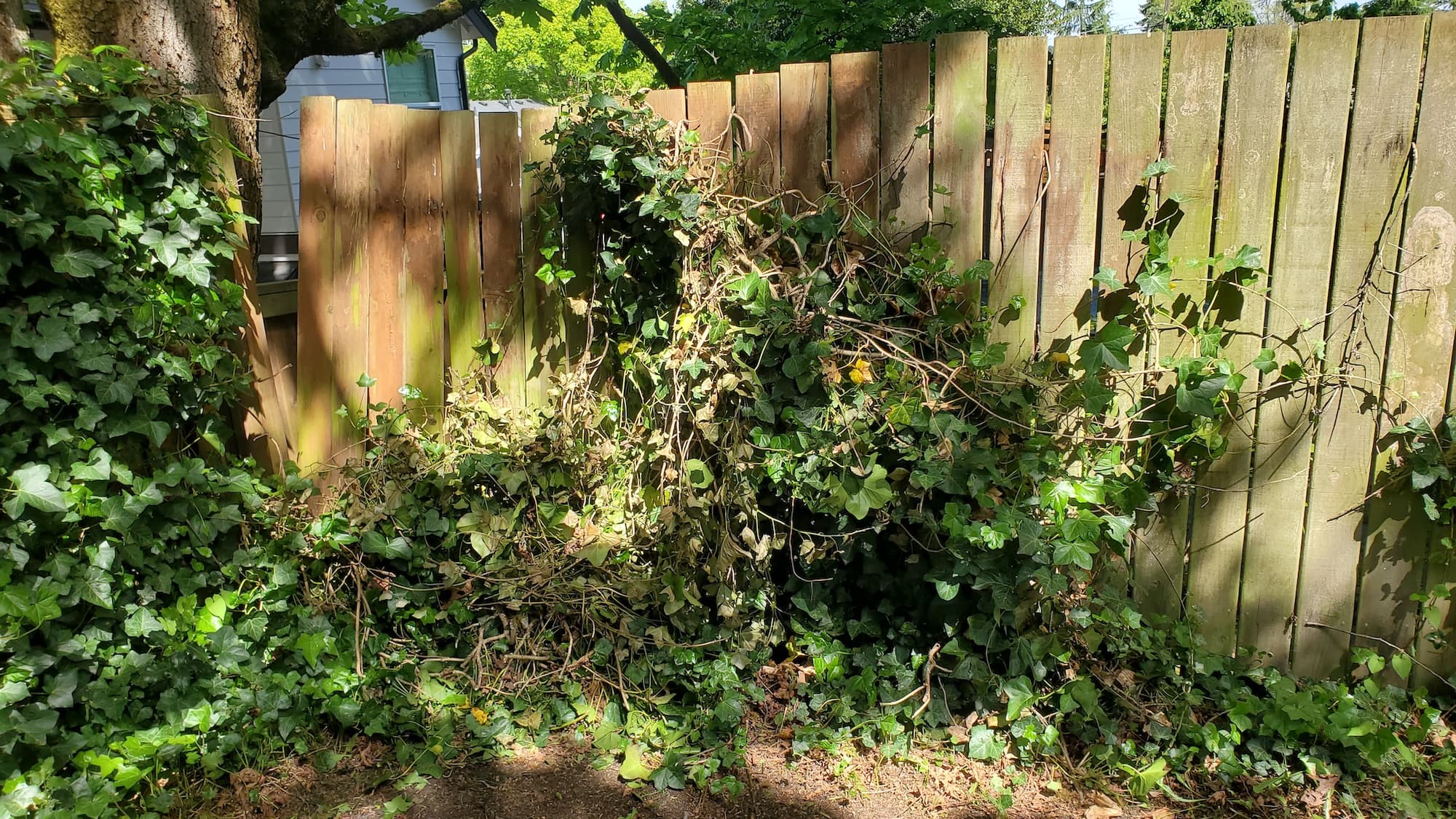West Seattle Dock Weed Removal
Homeowner’s Issue
West Seattle docks sit between salt spray, heavy winter rains, and shady trees — not a forgiving combo. The neighborhood’s maritime climate and compact glacial‑till soils encourage moss, creeping ivy, and opportunistic annuals to take hold in cracks, cleats, and decking seams. Properties near Alki and Lincoln Park see extra wind and salt exposure that can weaken decking and let weeds knit into rotten boards. Slopes toward the water, older bulkheads, and clogged downspouts funnel runoff into dock areas, promoting muddy growth and slippery surfaces.
Most homeowners notice a burst of weed growth after the first warm week in spring and again after late‑summer rains. West‑facing docks get sun in the afternoon but can stay damp overnight, so moss and algae are common underfoot. HOA rules and curb appeal matter here — a messy dock is both a liability and a blight on resale. We focus on sustainable, hands‑on removal (no herbicides), improving drainage paths, and planting tough native buffers where practical so you spend less time fighting regrowth and more time using the waterfront.
Our Quality Service
We remove dock weeds by hand and with mechanical scraping, then secure areas against quick regrowth. We use hand tools, long‑handled root hooks, stiff brooms, soft‑bristle brushes for algae, and low‑pressure rinsing with marine‑safe practices. Typical small dock jobs take 1–3 hours; medium jobs are half‑day; larger cleanups may require a full day and a crew.
Local insight: winter rains mean the best time for heavy removal is late spring through early fall when things dry. We account for slope runoff and shoreline exposure, and we avoid chemicals to protect shorelines and marine life. Benefits include safer footing, longer decking life, cleaner looks, and less ongoing maintenance.
What’s Included
- Onsite assessment and weed identification
- Manual root extraction and scraping of decking seams
- Soft‑bristle scrubbing for algae and moss
- Debris collection, bagging, and haul‑away or green‑bin dropoff
- Simple drainage fixes (clear gutters, clear downspout outfalls)
Options / upgrades:
- Mulch + fabric on adjacent beds to suppress re‑sprouts
- Native buffer planting (lowers erosion and blocks weeds)
- Organic soil amendment and compost top‑dressing
- Solarization of small root patches (plastic‑free where possible)
- Regular seasonal maintenance plans (quarterly, bi‑monthly)
Before & After / Expectations
Expect noise and scraping while we work and wet boards for a bit after rinsing. You’ll see immediate visual improvement, but root fragments left in crevices can regrow — follow‑up checks are normal. We handle hauling; choose green‑bin composting or full haul‑away depending on volume.
Care tips for West Seattle:
- Pull small regrowth in early spring before seed set.
- Limit watering near docks; summer water conservation is advised.
- Trim overhanging trees to reduce moss and debris.
- Watch ivy and blackberry on slopes — they creep into dock hardware and rot wood.
FAQs (3–5)
- Q: Will you use herbicides?
- A: No. We use manual, mechanical, and organic methods only to protect the shoreline.
- Q: How long before weeds return?
- A: With proper mulch and native buffers, most clients see far fewer weeds for 3–12 months. High‑exposure spots need more frequent checks.
- Q: Do you remove debris?
- A: Yes — we bag, compost, or haul away as you prefer.
- Q: When is the best time to schedule?
- A: Late spring through early fall is ideal for deep cleanups; light touch‑ups can be done year‑round.
Call to Action
If your West Seattle dock is slippery, overrun, or just embarrassing, book a straightforward cleanup. We’ll give a quick estimate from photos or schedule an on‑site check and get you on the calendar within days. Local, practical, and sustainable — that’s how we work.
Email: neatandtidyseattle@gmail.com
Phone: 206-538-9344
Ready for a safer, cleaner waterfront? Send photos and address details and we’ll reply with a clear plan.










